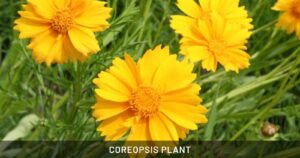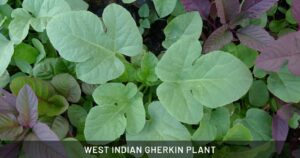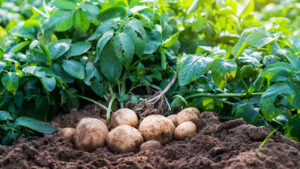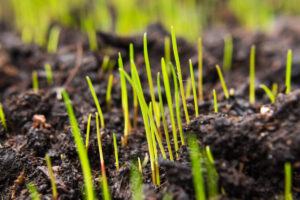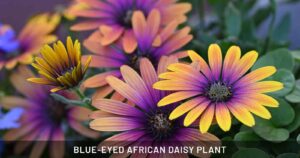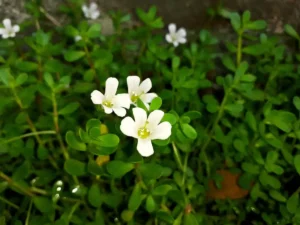How to Grow & Care for Joseph’s Coat: A Complete Guide
Are you looking to add a splash of vibrant color to your garden or landscape? Joseph’s Coat (Amaranthus tricolor), also known as “Summer Poinsettia” or “Chinese Spinach,” might be exactly what you need. This stunning ornamental plant is cherished for its brilliantly colored foliage that displays a striking combination of red, yellow, green, and sometimes purple—truly living up to its biblical namesake of the multicolored coat.
In this comprehensive guide, you’ll discover everything you need to know about successfully growing and caring for Joseph’s Coat, from planting to harvesting, and even how to use it in your culinary adventures.
Understanding Joseph’s Coat
Native to tropical Asia, Joseph’s Coat (Amaranthus tricolor) is a member of the Amaranthaceae family. It’s an annual plant that typically grows 2-4 feet tall and 1-2 feet wide, creating a spectacular display with its multicolored foliage. Beyond its ornamental value, Joseph’s Coat has been cultivated for centuries in various cultures as an edible leafy green, packed with nutrients.
According to the USDA Natural Resources Conservation Service, Joseph’s Coat grows best in USDA hardiness zones 2-11, making it suitable for most of the continental United States.
Key Characteristics of Joseph’s Coat
- Botanical Name: Amaranthus tricolor
- Family: Amaranthaceae
- Common Names: Joseph’s Coat, Summer Poinsettia, Chinese Spinach, Callaloo
- Plant Type: Annual
- Mature Size: 2-4 feet tall, 1-2 feet wide
- Sun Exposure: Full sun to partial shade
- Soil Type: Well-draining, fertile soil
- Soil pH: 6.0-7.5
- Bloom Time: Summer to fall
- Flower Color: Insignificant; prized for colorful foliage
- Hardiness Zones: 2-11 (USDA)
- Native Area: Tropical Asia
When and Where to Plant Joseph’s Coat
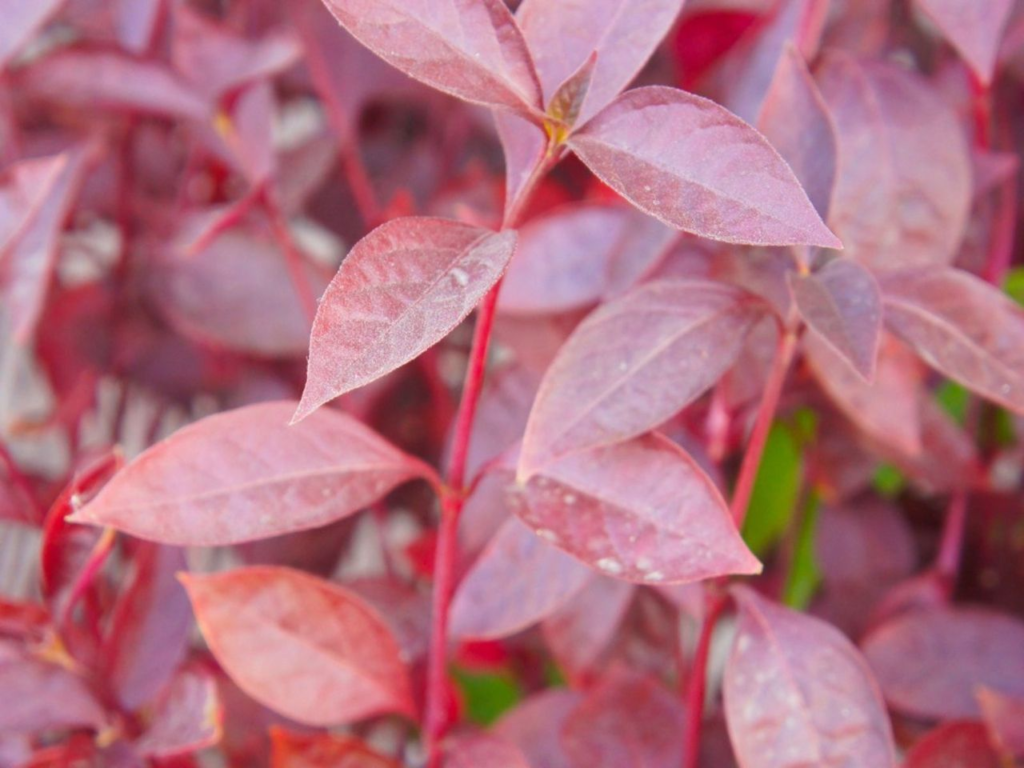
Choosing the Right Location
Joseph’s Coat thrives in full sun, which enhances its vibrant colors. However, in regions with extremely hot summers, providing afternoon shade can prevent leaf scorch and maintain the plant’s vigor. When selecting a planting site, consider the following:
- Sunlight: Choose a location that receives at least 6 hours of direct sunlight daily.
- Protection: Provide some afternoon shade in hot climates.
- Spacing: Allow 12-18 inches between plants to ensure good air circulation.
- Visibility: Select a spot where the colorful display can be appreciated, such as borders, container gardens, or as a focal point.
Ideal Planting Time
For optimal growth, timing is essential:
- Indoor seed starting: 6-8 weeks before the last frost date in your area
- Direct outdoor sowing: After all danger of frost has passed and soil temperatures reach at least 60°F (15°C)
- Transplanting seedlings: When seedlings have developed 2-3 true leaves and outdoor conditions are favorable
How to Plant Joseph’s Coat
Whether you’re starting from seeds or transplants, proper planting techniques are crucial for success.
Starting from Seeds
- Indoor seeding:
- Fill seed trays with a high-quality seed starting mix.
- Place seeds on the surface and lightly press into the soil (don’t cover, as they need light to germinate).
- Mist to moisten soil and cover with a humidity dome or plastic wrap.
- Maintain soil temperature around 70-75°F (21-24°C).
- Seeds should germinate within 7-14 days.
- Direct sowing outdoors:
- Prepare the soil by removing weeds and incorporating compost.
- Scatter seeds thinly on the soil surface and press gently.
- Keep soil consistently moist until germination.
- Once seedlings reach 2-3 inches tall, thin to 12-18 inches apart.
Transplanting Seedlings
- Harden off indoor-grown seedlings by gradually exposing them to outdoor conditions over 7-10 days.
- Dig a hole slightly larger than the root ball of your seedling.
- Place the seedling at the same depth it was growing in its container.
- Backfill with soil and firm gently around the base.
- Water thoroughly after planting.
Soil Requirements and Preparation
Joseph’s Coat isn’t particularly fussy about soil type but performs best in well-draining, moderately fertile soil with a pH between 6.0 and 7.5.
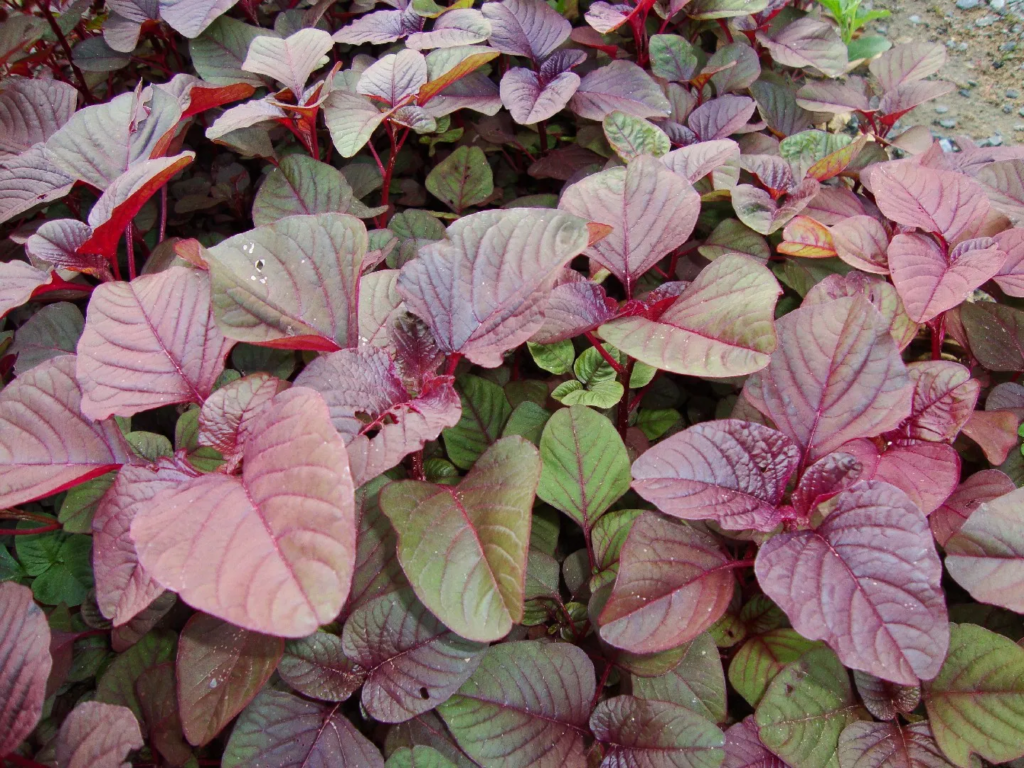
Soil Preparation
- Testing: Consider a soil test to determine pH and nutrient levels. Contact your local extension office for testing services.
- Amending: Based on test results, amend as needed:
- For heavy clay soil: Add compost, aged manure, or coconut coir to improve drainage.
- For sandy soil: Incorporate organic matter to improve water retention.
- For acidic soil: Add garden lime to raise pH if necessary.
- Enriching: Mix in 2-3 inches of compost to provide nutrients and improve soil structure.
Watering and Fertilizing Joseph’s Coat
Watering Guidelines
Joseph’s Coat appreciates consistent moisture, especially during the establishment phase and hot weather periods. However, it also has moderate drought tolerance once established.
- Newly planted: Water deeply every 2-3 days for the first two weeks.
- Established plants: Water when the top inch of soil feels dry, typically once a week depending on weather conditions.
- Container plants: Check more frequently as containers dry out faster than in-ground plantings.
Fertilization Schedule
For optimal growth and vibrant colors, follow this fertilization schedule:
| Growth Stage | Fertilizer Type | NPK Ratio | Application Rate | Frequency |
|---|---|---|---|---|
| Seedling stage | Liquid seaweed or fish emulsion | Balanced (e.g., 5-5-5) | Half-strength | Every 2 weeks |
| Vegetative growth | All-purpose organic | Balanced to nitrogen-rich (e.g., 10-5-5) | As directed on package | Every 3-4 weeks |
| Mid-season | Compost tea | Varies | Full strength | Monthly |
| Late season | Low-nitrogen formula | (e.g., 3-6-6) | As directed on package | Once in late summer |
Note: Over-fertilization can cause leggy growth and diminish color intensity. When in doubt, it’s better to under-fertilize than over-fertilize.
Managing Pests and Diseases
While Joseph’s Coat is relatively pest and disease resistant, it can occasionally face challenges.
Common Pests
- Aphids: These small, soft-bodied insects cluster on new growth and undersides of leaves.
- Solution: Spray with strong water jet, insecticidal soap, or neem oil.
- Leaf miners: These create distinctive tunnels or trails within leaves.
- Solution: Remove and destroy affected leaves; apply neem oil preventatively.
- Spider mites: These tiny pests cause stippling on leaves and produce fine webbing.
- Solution: Increase humidity; spray with water; apply insecticidal soap if infestation is severe.
Disease Prevention
- Leaf spot diseases: Fungal infections causing dark spots on foliage.
- Prevention: Avoid overhead watering; ensure good air circulation.
- Treatment: Remove affected leaves; apply organic fungicide if necessary.
- Root rot: Caused by overwatering or poor drainage.
- Prevention: Plant in well-draining soil; avoid overwatering.
- Treatment: Reduce watering; improve drainage; in severe cases, plants may need to be discarded.
Sustainable Pest Management
Embrace integrated pest management (IPM) principles:
- Regularly inspect plants for early signs of problems
- Maintain plant vigor through proper care
- Encourage beneficial insects like ladybugs and lacewings
- Use physical barriers and traps before chemical solutions
- If treatment is needed, start with the least toxic option
Pruning and Maintenance
Proper maintenance keeps your Joseph’s Coat looking its best while promoting branching and more colorful foliage.
Pruning Techniques
- Pinching: When plants reach 8-10 inches tall, pinch the growing tips to encourage bushier growth and more colorful foliage.
- Deadheading: Remove flower spikes as they appear (unless you want to save seeds) to direct energy back into foliage production.
- Selective pruning: Remove any yellowed or damaged leaves promptly to maintain appearance and plant health.
Seasonal Maintenance
- Spring: Prepare soil and plant after frost danger passes.
- Summer: Monitor watering needs closely, especially during heat waves.
- Fall: Collect seeds from mature plants if desired.
- Winter: In frost-free areas, plants may survive with protection; otherwise, treat as an annual and replant next season.
Harvesting and Using Joseph’s Coat
Beyond its ornamental value, Joseph’s Coat has culinary and practical applications that make it a true multipurpose plant.
Harvesting Leaves for Consumption
- Begin harvesting when plants are at least 6-8 inches tall.
- Harvest in the morning when leaves are at their freshest.
- Select young, tender leaves for the mildest flavor.
- Cut leaves individually or harvest entire stems for larger harvests.
- Leave at least 1/3 of the plant intact to allow for continued growth.
Culinary Uses
Young Joseph’s Coat leaves are edible and nutritious, packed with vitamins A and C, iron, calcium, and protein. They’re popular in Asian and Caribbean cuisines.
- Raw applications: Add young, tender leaves to salads for color and a mild, spinach-like flavor.
- Cooked applications: Sauté, steam, or stir-fry like spinach or other greens.
- Traditional dishes: Used in the Caribbean dish “callaloo” and in various Asian soups and stir-fries.
Recipe Idea: Simple Sautéed Joseph’s Coat Greens
- Wash and coarsely chop 4 cups of Joseph’s Coat leaves.
- Heat 1 tablespoon olive oil in a skillet over medium heat.
- Add 1 minced garlic clove and sauté for 30 seconds.
- Add greens and sauté until just wilted, about 1-2 minutes.
- Season with salt, pepper, and a squeeze of lemon juice.
- Serve as a nutritious side dish.
Saving Seeds
Joseph’s Coat readily produces seeds that can be saved for next season:
- Allow some plants to flower and set seed.
- When seed heads turn brown and dry, cut and place in a paper bag.
- Shake bag to release seeds or rub seed heads between your hands.
- Store seeds in a cool, dry place in labeled paper envelopes.
- Seeds remain viable for 3-5 years when properly stored.
Growing Joseph’s Coat in Containers
With its compact habit and striking appearance, Joseph’s Coat makes an excellent container specimen.
Container Selection
- Choose a container at least 12 inches in diameter and depth.
- Ensure adequate drainage holes.
- Lighter-colored containers help prevent soil from overheating.
Container Growing Tips
- Use high-quality potting mix formulated for containers.
- Add slow-release fertilizer at planting time.
- Monitor moisture more frequently as containers dry out faster than garden soil.
- Move containers to sheltered locations during extreme weather.
- Consider combining with complementary plants like silver-leaved dusty miller or blue lobelia for striking compositions.
Propagation Methods
While seed starting is the most common propagation method, Joseph’s Coat can also be propagated through cuttings.
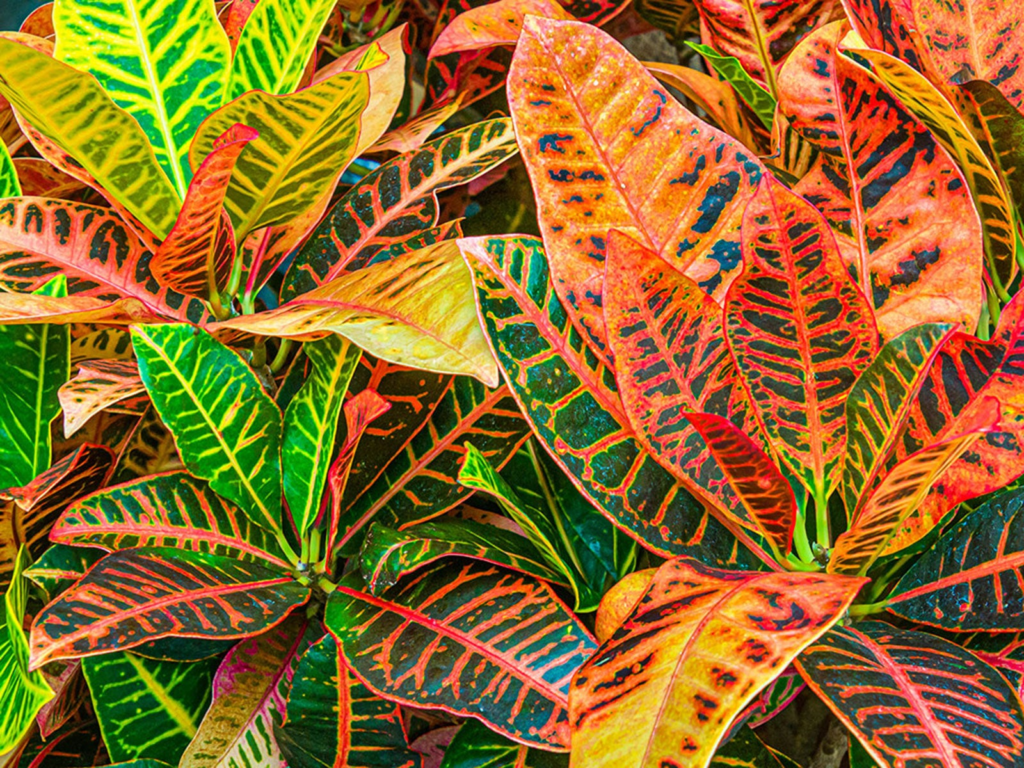
Stem Cutting Propagation
- Take 4-6 inch cuttings from healthy, non-flowering stems.
- Remove lower leaves, leaving just 2-3 sets at the top.
- Dip cut ends in rooting hormone (optional but helpful).
- Insert into a moistened mix of equal parts perlite and peat moss.
- Cover with a plastic dome or bag to maintain humidity.
- Place in bright, indirect light until roots develop (typically 2-3 weeks).
- Transplant into individual containers once rooted.
Joseph’s Coat in Landscape Design
Landscape Applications
- Borders: Creates vibrant color at mid-height in perennial or annual borders.
- Mass plantings: Creates dramatic swaths of color.
- Accent plant: Use as a focal point in mixed containers or garden beds.
- Color echo: Plant near flowers that pick up one of the colors in the foliage.
Design Companions
Joseph’s Coat pairs beautifully with:
- Silver-foliaged plants (dusty miller, lamb’s ears)
- Blue or purple flowers (salvia, verbena, ageratum)
- Ornamental grasses for textural contrast
- Lime green foliage plants (sweet potato vine, coleus)
Overwintering Joseph’s Coat
In most of the U.S., Joseph’s Coat is grown as an annual. However, in frost-free regions (USDA zones 9-11), it can be overwintered with proper care.
Overwintering Techniques
- In-ground plants: Apply a thick layer of mulch around the base in marginal zones.
- Container plants: Move to a protected area or indoors near a sunny window.
- Indoor care: Reduce watering and hold off on fertilizing until spring.
- Pruning: Cut back by about one-third before overwintering to encourage compact growth.
Common Problems and Solutions

Troubleshooting Guide
- Problem: Fading leaf color
- Possible causes: Insufficient light, nutrient deficiency, or stress
- Solutions: Move to a sunnier location; apply balanced fertilizer; check for pests
- Problem: Leggy growth
- Possible causes: Insufficient light, overcrowding, or excess nitrogen
- Solutions: Increase light exposure; thin plants; reduce nitrogen fertilizer
- Problem: Leaf drop
- Possible causes: Drought stress, overwatering, or temperature extremes
- Solutions: Adjust watering schedule; protect from temperature extremes
- Problem: Poor germination
- Possible causes: Old seeds, incorrect planting depth, or improper temperature
- Solutions: Use fresh seeds; surface sow only; maintain warm soil temperatures
Environmental Benefits of Joseph’s Coat
Beyond its ornamental and culinary value, Joseph’s Coat offers several environmental benefits:
- Pollinator attraction: The flowers, though not showy, attract beneficial insects.
- Biodiversity support: Provides habitat and food for various beneficial insects.
- Heat tolerance: Thrives in urban heat islands where other plants might struggle.
- Low resource needs: Once established, requires minimal inputs of water and fertilizer.
Conclusion
With its stunning rainbow-colored foliage, ease of care, and multiple uses, Joseph’s Coat deserves a place in your garden or container collection. Whether you’re growing it for its spectacular colors, its edible leaves, or both, this versatile plant offers tremendous value for minimal effort.
By following the guidelines in this comprehensive care guide, you’ll be well-equipped to grow Joseph’s Coat successfully in your garden, enjoy its beauty throughout the growing season, and perhaps even incorporate its nutritious leaves into your culinary adventures.
Remember that gardening is part science, part art, and part patient observation. Don’t be afraid to experiment and adjust your care techniques based on your specific growing conditions and the response of your plants. Happy gardening!

